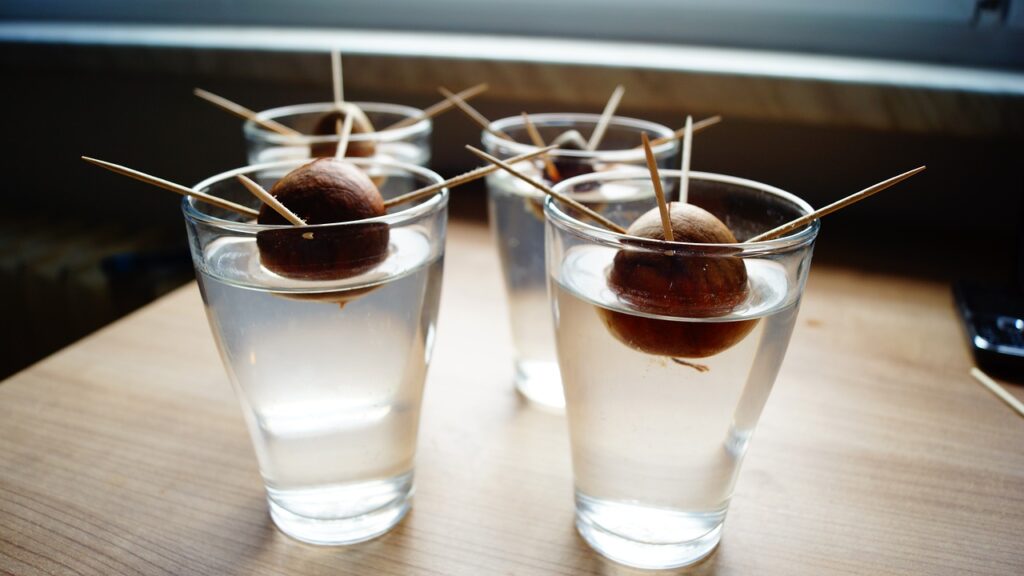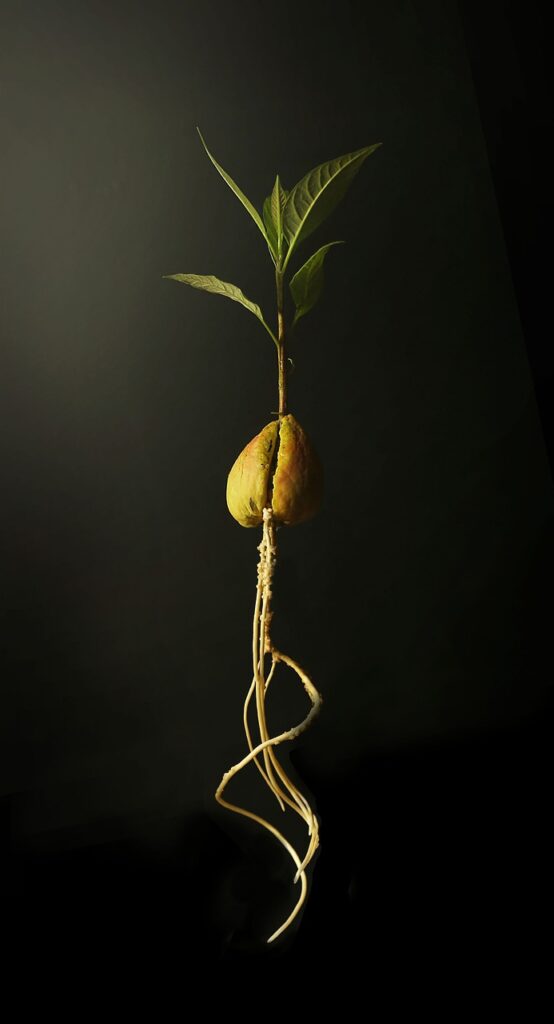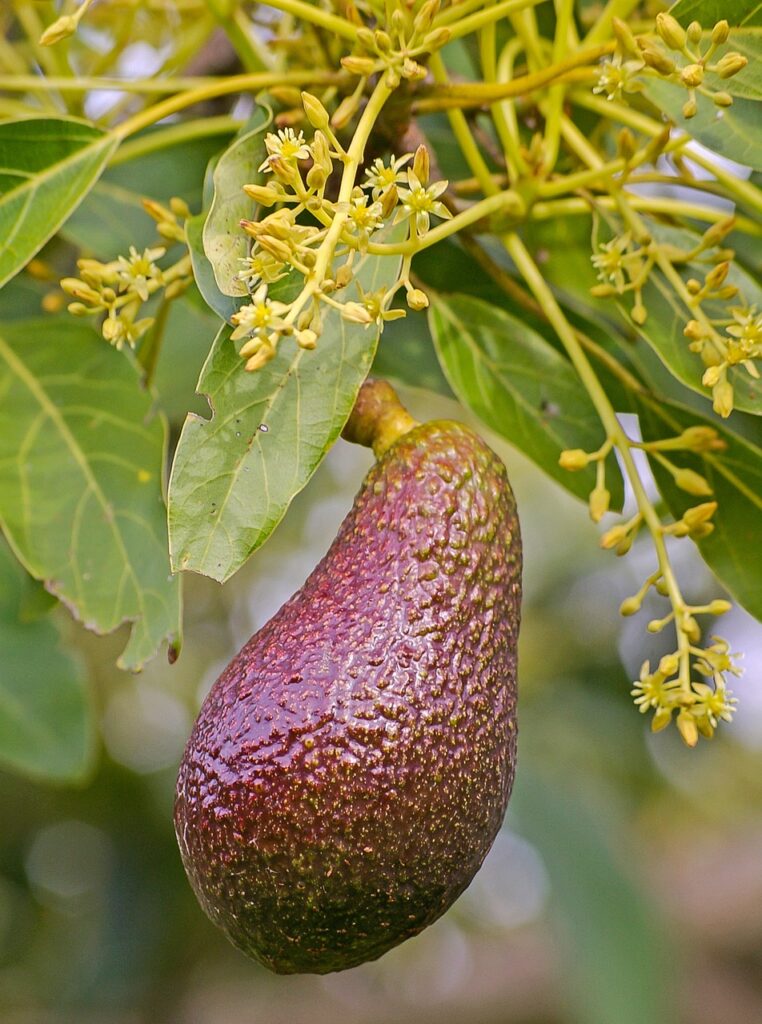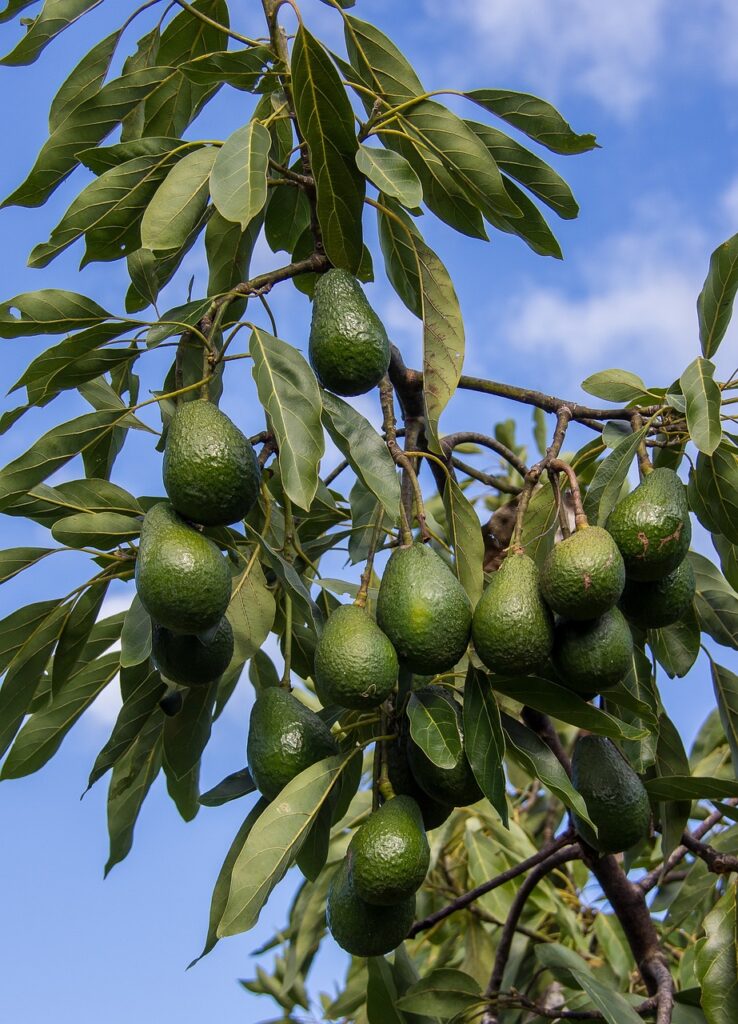Captivating the Green Journey
Embarking on the journey of growing an avocado tree is like nurturing a little green dream into fruition. From the joy of planting to the delight of harvest, every step in this process is an adventure in itself.

Avocado trees hold the promise of not only providing you with a bountiful harvest of creamy, nutritious fruits but also adding a touch of natural beauty to your surroundings. This article delves into the art of cultivating these remarkable trees, from understanding their botanical intricacies to exploring the geographical zones where they thrive.
Understanding Avocado Trees
Avocado trees, scientifically known as Persea americana, belong to the Lauraceae family, which also includes aromatic laurels and the source of cinnamon and bay leaves. These evergreen trees boast an impressive height range, spanning from a modest 20 feet to a towering 80 feet, depending on the variety and growing conditions. What sets avocado trees apart is their growth habit. Unlike many fruit trees that have a single central trunk, avocados often grow multiple trunks, giving them a lush and bushy appearance.
Within this diverse family of trees, there exists a captivating array of avocado varieties. Each variety possesses its unique traits, including differences in fruit size, shape, skin texture, and flavor profile. Some are prized for their rich, buttery taste, while others offer a more subtle, nutty essence. These variations make avocado cultivation a journey of exploration, allowing you to discover the nuances that each variety brings to your palate.
Preparing for Planting
Before diving into the planting process, selecting the perfect spot for your avocado tree is of paramount importance. Avocado trees thrive in well-draining soil, but they are also quite particular about their location. They prefer areas that receive ample sunlight while being sheltered from strong winds. A sun-soaked southern or western exposure is often ideal.

Soil composition and drainage are equally crucial factors to consider. Avocado trees despise waterlogged soil, which can lead to root rot. Prior to planting, ensure that your soil has excellent drainage. You can achieve this by amending heavy clay soil with organic matter and creating raised beds to facilitate water runoff. By providing the right conditions from the start, you’re setting the stage for a healthy and prosperous avocado tree.
Propagation Techniques
When it comes to growing avocado trees, you have two primary methods at your disposal: seed germination and grafting. Seed germination involves sprouting an avocado pit, nurturing it into a sapling, and eventually transplanting it to your desired location. While this method is a rewarding and educational experience, it’s worth noting that the resulting tree may not maintain the exact characteristics of its parent.

On the other hand, grafting allows you to maintain the specific traits of a desirable avocado variety. This technique involves fusing a cutting (scion) from a chosen avocado tree onto a rootstock, which serves as the tree’s base. Grafting ensures that the resulting tree inherits the desired fruit characteristics and growth habits of the scion while benefiting from the rootstock’s robust root system.
Planting Process
Once you’ve chosen your method of propagation, it’s time to initiate the planting process. If you’re opting for seed germination, start by carefully removing the pit from a ripe avocado and cleaning it thoroughly. The pit can then be partially submerged in water using toothpicks for support, allowing the roots to sprout. Once the roots have developed, transfer the young plant to a pot with well-draining soil. (what I like to call the “Youtube Method”)

behold the artistry of germinating an avocado seed through a method that reads like a scientific symphony. In the ballet of growth, the wet paper towel and zip bag technique choreographs nature’s prowess in captivating ways.
The process commences with a select seed, cradled within the embrace of the avocado’s creamy flesh. Delicately extracted, the seed presents itself as a potential harbinger of life, its outer shell concealing secrets that only moisture and time will unveil.
With the gentleness of a curator handling an artifact, the seed is then nestled within the humid folds of a damp paper towel. The water, a key to unlocking its dormant energy, enshrouds the seed in a cocoon of potential. Tenderly placed into a zip bag, this makeshift laboratory becomes the crucible of transformation.
Within this sealed chamber, nature’s magic unfolds. Warmth and moisture coax the seed to awaken, a tiny explorer venturing forth to taste the unseen. A root, delicate yet determined, pushes its boundaries, venturing into the unknown.

As days progress, a sense of anticipation mounts. The emergence of the first root feels like a discovery – a secret revealed only to those patient enough to witness it. This process, a testament to the interplay of elements, turns the act of germinating into an act of reverence.
In the tapestry of growth, the wet paper towel and zip bag method stands as a testament to both patience and possibility. Through the emergence of a tenacious root, an avocado seed transcends its humble state, transforming into a vessel of vitality, echoing the symphony of life that dances through the heart of nature itself.
Grafting, on the other hand, involves more intricate steps. Select a healthy rootstock with a strong root system and a scion from the avocado variety you desire. Make precise cuts on both the scion and the rootstock, ensuring they fit together snugly. Secure them with a grafting clip or tape, and provide the newly grafted tree with proper care and attention.
Nurturing Growth
As your avocado tree begins its journey, proper care is essential to ensure healthy growth. Crafting a watering routine that strikes the balance between hydration and avoiding waterlogging is vital. Avocado trees require consistent moisture, particularly during their early years, but they also dislike standing water around their roots.

Pruning is another aspect of nurturing growth that should not be overlooked. Pruning serves multiple purposes, including shaping the tree, promoting air circulation, and removing dead or diseased branches. By maintaining an open and well-structured canopy, you’re creating an environment that encourages healthy growth and productive fruiting.
Fertilization Strategies
For your avocado tree to thrive, it needs an appropriate balance of nutrients. Understanding its nutrient requirements can help you select the right fertilization strategy. Organic fertilizers, such as compost and well-rotted manure, provide slow-release nutrients that enhance soil structure and microbial activity. Synthetic fertilizers, on the other hand, offer precise control over nutrient content, but they should be used judiciously to avoid over-fertilization.
Applying fertilizer at the right time is equally important. Avocado trees benefit from multiple applications throughout the year, with a focus on the growing season. A balanced fertilizer with equal or slightly higher nitrogen and potassium levels, along with phosphorous, can contribute to robust growth and fruitful yields.
Protecting from Pests and Diseases
Guarding your avocado tree against pests and diseases requires vigilance and knowledge. Common pests such as aphids, spider mites, and scale insects can sap the vitality of your tree. Regularly inspecting the foliage, especially the undersides of leaves, can help you catch infestations early. Introducing beneficial insects like ladybugs can also aid in pest control.
Fungal diseases, including root rot and anthracnose, can pose threats to avocado trees. Proper watering practices that avoid waterlogged soil, as well as maintaining good air circulation through pruning, can reduce the risk of fungal infections. If needed, organic fungicides can be applied preventively to protect your tree’s health.
Climatic Influences on Fruiting
The climatic preferences of avocado trees play a significant role in determining where they thrive. Avocado trees flourish in subtropical to tropical climates, where frost is rare and temperatures remain relatively warm. However, not all subtropical regions are equally suitable. Understanding the concept of climate zones, such as USDA hardiness zones and Köppen climate classifications, can guide you in selecting the right avocado variety for your area.

Avocado trees have varying degrees of heat and cold tolerance. While some varieties can withstand mild frosts, others are more sensitive and require protection during colder months. It’s important to choose a variety that aligns with your local climate to ensure successful fruiting.
The Exciting World of Flowering
Avocado flowers are a marvel to behold, with intricate structures that facilitate their unique pollination process. Avocado trees are protogynous, meaning that their flowers change from female to male over time. This mechanism promotes cross-pollination and increases the likelihood of a successful fruit set.

Pollination, however, can be a challenge for avocado trees, as they are not self-pollinating. To ensure a successful harvest, consider planting multiple avocado trees or introducing pollinators like bees to your garden. Additionally, hand-pollination techniques, such as transferring pollen from one flower to another using a small brush, can enhance the chances of fruit development.
Patience: From Blossom to Fruit
The journey from blossom to fruit is a testament to the virtue of patience. Avocado trees go through several stages before producing mature fruits. After successful
pollination, the small embryo fruit begins to develop. Over time, this tiny fruit grows, changing in both size and appearance. As the fruit matures, it takes on the distinctive shape that we associate with avocados, transitioning from a small, hard orb to a plump and luscious pear-shaped marvel.
Several factors influence the time it takes for avocados to mature and become ready for harvest. These factors include the variety of avocados, local climate conditions, and even the tree’s age. Generally, avocados can take anywhere from several months to a year or more to go from flower to mature fruit. This extended period is a reminder that nature follows its own timetable, rewarding those who practice patience and perseverance.
Harvesting and Enjoying
Harvesting avocados at the right moment is a skill that requires careful observation and a touch of finesse. Determining the optimal time for harvest involves considering both the external appearance and the feel of the fruit. As avocados mature, their skin color changes, transitioning from bright green to a darker hue that varies depending on the variety. However, color alone isn’t a foolproof indicator of ripeness.

To test for ripeness, gently press the fruit near the stem end. If the avocado yields slightly to gentle pressure without feeling overly soft or mushy, it’s likely ready to be harvested. It’s important to note that avocados don’t all ripen simultaneously on the tree. Therefore, you may need to harvest avocados at different times as they reach their ideal stage of ripeness.
Once harvested, avocados can be ripened further indoors at room temperature. Placing them in a paper bag alongside a ripe banana or apple can expedite the process due to the release of ethylene gas by these fruits. Once your avocados have reached the desired level of ripeness, they can be refrigerated to extend their shelf life slightly.
Beyond Your Backyard: Zones for Avocado Fruiting
Avocado cultivation isn’t confined to specific regions; it spans a diverse range of geographical zones. The suitability of an area for avocado cultivation is largely determined by its climate. Avocado trees thrive in subtropical to tropical climates, which are characterized by mild winters and warm, frost-free conditions.
Understanding the concept of hardiness zones, as defined by the United States Department of Agriculture (USDA), is a valuable tool for determining the potential success of avocado cultivation in a particular region. Hardiness zones provide insight into the lowest average winter temperatures an area is likely to experience. Avocado varieties that can tolerate colder temperatures are more likely to thrive in lower hardiness zones.
Additionally, considering the Köppen climate classification, which categorizes climates based on temperature and precipitation patterns, can provide a more comprehensive understanding of the climatic conditions that favor avocado growth. Avocado-friendly climates include those classified as tropical rainforest (Af), tropical monsoon (Am), and subtropical (Cfa and Cfb).

While certain regions are naturally conducive to avocado cultivation, innovative practices such as microclimate creation and the use of protective structures can extend the range of viable avocado-growing areas. These techniques enable enthusiasts in less traditional avocado zones to experiment with cultivating these beloved trees.
Conclusion
Growing an avocado tree is an odyssey that intertwines cultivation and fruitfulness, patience, and reward. From selecting the perfect variety and providing the ideal growing conditions to witnessing the transformation from blossom to fruit, every step in the journey is a lesson in dedication and appreciation for nature’s processes.

As you embark on this green journey, remember that avocados are not only delicious and nutritious but also a testament to the wonders of horticulture. With the right care, a touch of creativity, and a generous dose of patience, you can transform your backyard or garden into a thriving avocado orchard, where each tree stands as a testament to your commitment to fostering life and beauty.
